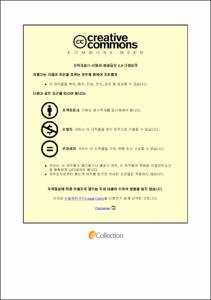2유체노즐의 미분무 분사 특성이 복사열 감쇠에 미치는 영향에 대한 연구
- Alternative Title
- Investigation on Effects of Spray Characteristics for Water Mist of Twin-fluid Nozzle on Thermal Radiation Attenuation
- Abstract
- In this study, the effects of spray characteristics for water mist of twin-fluid nozzles on thermal radiation attenuation was investigated numerically and experimentally. For numerical simulations, the effects of spray characteristics (i.e., water flow rate, droplet size, and spray angle) of water mist on peak and average thermal radiation attenuation were examined preliminarily using fire dynamics simulator (FDS). Then, experiments of spray characteristics of twin-fluid nozzles and their thermal radiation attenuation performance were conducted. As the twin-fluid nozzles, the external and internal mixing types were tested. For the spray characteristics, the supply pressure, droplet size, spray angle, spray width, and flow distribution were measured. The supply pressures of water and air were 1.3-59.6 and 29.8-316.1 kPa, respectively. The SMD (Sauter Mean Diameter) and VMD (Volume Median Diameter, Dv0.5) were 19.9-99.4 and 21.1-107.6 μm, respectively. Through the visualization, the spray angle and spray width were measured. The spray width were approximately 200 and 300-320 mm for spray angles of 20° and 70°, respectively. From the flow distribution measurement, it was found that spray patterns of twin-fluid nozzles were full cone. Finally, the thermal radiation attenuation on water mist of twin-fluid nozzles were measured under various water and air flow rate conditions. Under the present experimental conditions, the thermal radiation attenuation of twin-fluid nozzles were measured to be 6.9-52.4%. As the water flow rate and spray angle increased while the droplet size decreased, the thermal radiation attenuation increased. Based on the experimental data, the separate effects of water flow rate and droplet size on thermal radiation attenuation were investigated. In the present experimental range, the thermal radiation attenuation was proportional to water flow rate to the power of 0.32 and to the power of 0.33 under nearly constant SMD and VMD conditions, respectively. In addition, the thermal radiation attenuation was proportional to SMD to the power of -0.59 and VMD to the power of -0.53 for droplet size under nearly constant water flow rate conditions. Based on these results, the droplet size affected more significantly the change in thermal radiation attenuation than the water flow rate.
- Issued Date
- 2022
- Awarded Date
- 2022. 2
- Type
- Dissertation
- Publisher
- 부경대학교
- Alternative Author(s)
- Jae Geun Jo
- Affiliation
- 부경대학교 대학원
- Department
- 대학원 건축·소방공학부
- Advisor
- 이치영
- Table Of Contents
- 제 1 장 서 론 1
1.1 연구 배경 1
1.2 이론적 배경 5
1.3 기존 연구 동향 10
1.4 연구 목적 및 내용 17
제 2 장 선행 전산시뮬레이션 18
2.1 전산시뮬레이션 조건 및 방법 18
2.1.1 전산시뮬레이션 개략도 18
2.1.2 전산시뮬레이션 조건 20
2.1.3 전산시뮬레이션 결과 처리 방법 22
2.1.4 전산시뮬레이션 격자 크기 및 신뢰성 검토 25
2.2 전산시뮬레이션 결과 및 분석 29
2.2.1 물 공급 유량 영향 29
2.2.2 액적 크기 영향 31
2.2.3 분사각 영향 33
2.2.4 분사 특성에 대한 독립적인 영향 35
제 3 장 2유체노즐 분사 특성 측정 실험 38
3.1 2유체노즐 38
3.1.1 외부혼합형 2유체노즐 40
3.1.2 내부혼합형 2유체노즐 43
3.2 실험 장치 및 방법 49
3.2.1 공급 압력 51
3.2.2 액적 크기 53
3.2.3 분사각 및 분무폭 55
3.2.4 유량 분포 57
3.3 실험 결과 및 분석 60
3.3.1 공급 압력 60
3.3.2 액적 크기 64
3.3.3 분사각 및 분무폭 73
3.3.4 유량 분포 78
제 4 장 미분무 복사열 감쇠 실험 83
4.1 실험 장치 및 방법 83
4.1.1 실험 장치 83
4.1.2 실험 조건 및 방법 85
4.2 실험 결과 및 분석 88
4.2.1 물 및 공기 공급 유량 영향 88
4.2.2 분사 특성에 대한 독립적인 영향 97
4.2.2.1 물 공급 유량에 대한 독립적인 영향 97
4.2.2.2 액적 크기에 대한 독립적인 영향 103
제 5 장 결 론 109
- Degree
- Master
- Files in This Item:
-
-
Download
 2유체노즐의 미분무 분사 특성이 복사열 감쇠에 미치는 영향에 대한 연구.pdf
기타 데이터 / 2.86 MB / Adobe PDF
2유체노즐의 미분무 분사 특성이 복사열 감쇠에 미치는 영향에 대한 연구.pdf
기타 데이터 / 2.86 MB / Adobe PDF
-
Items in Repository are protected by copyright, with all rights reserved, unless otherwise indicated.